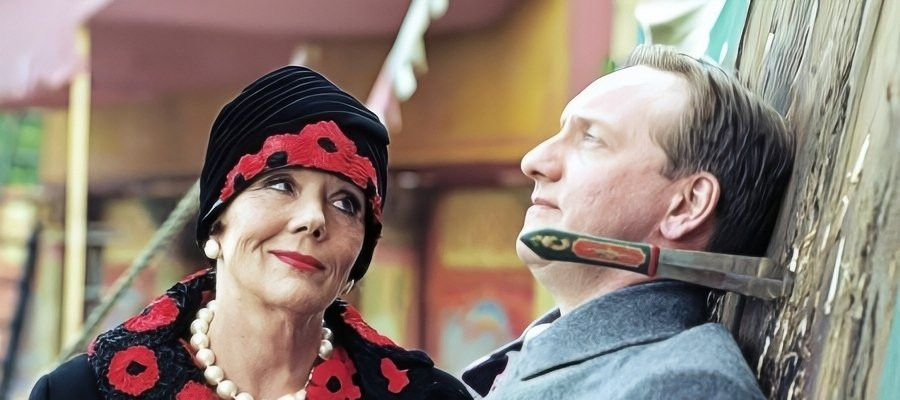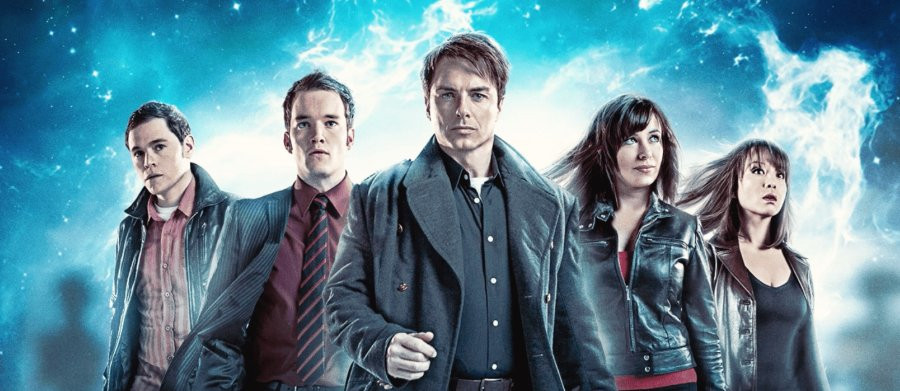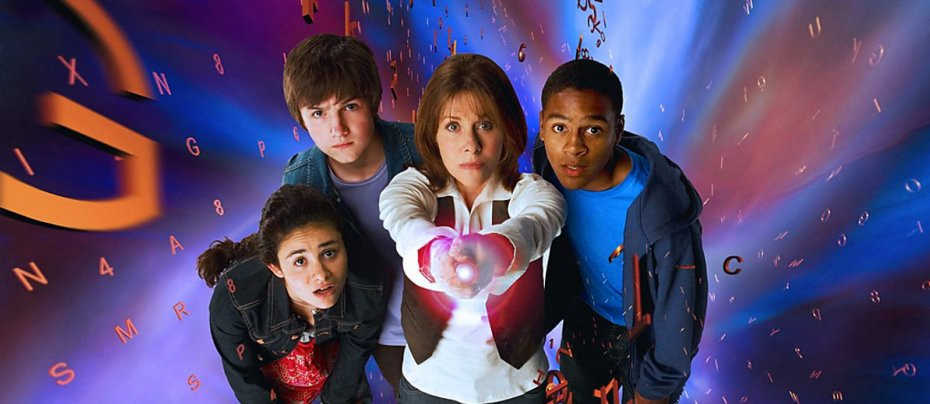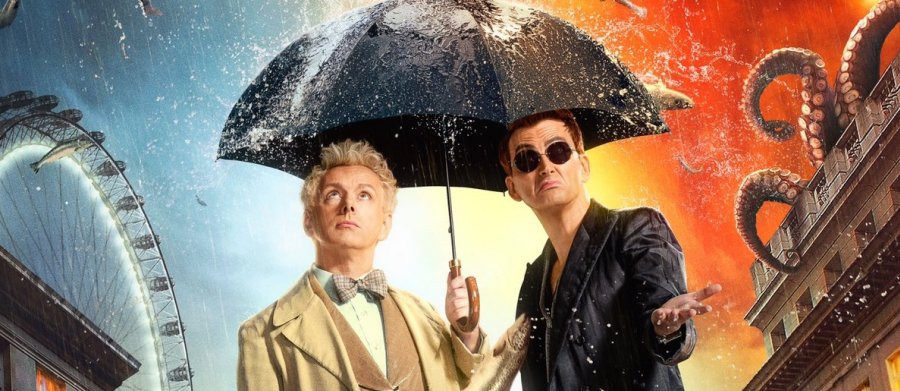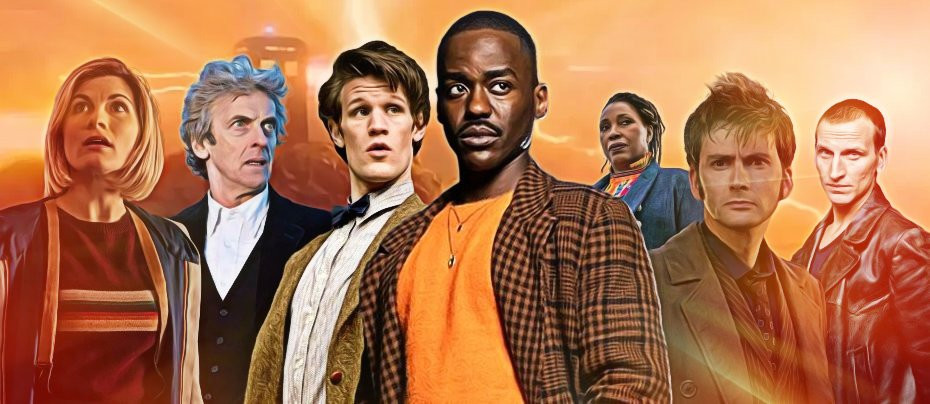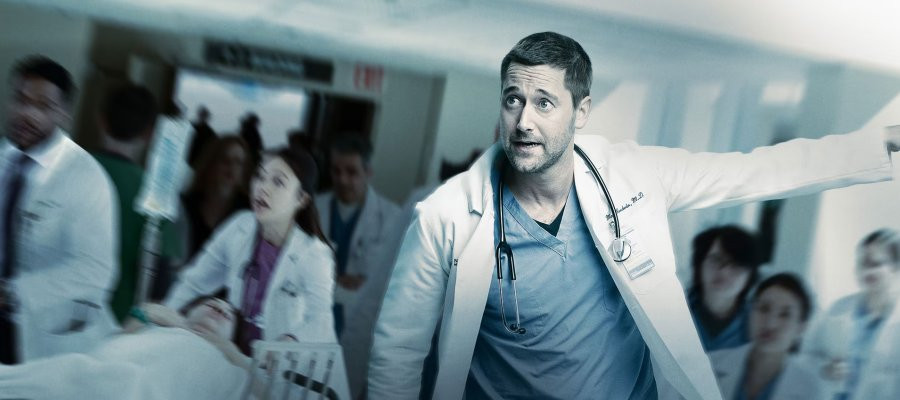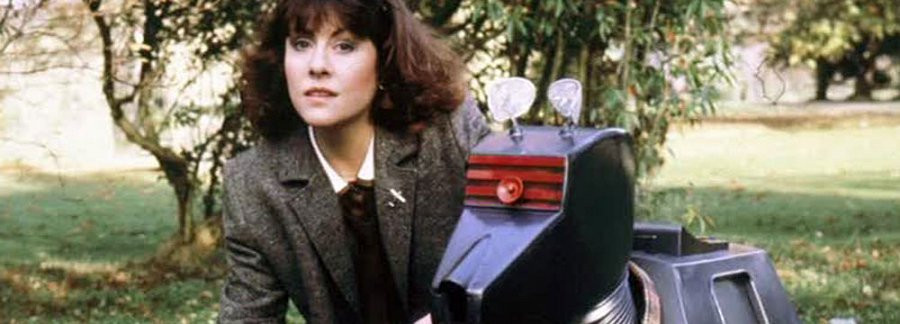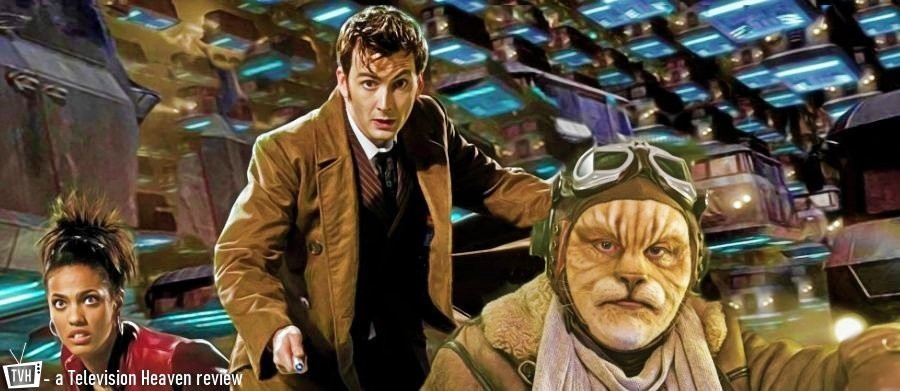
The Best of...Doctor Who - Gridlock
The Best of Doctor Who (The Revived Series)
Gridlock (2007)
At time of writing, the modern iteration of Doctor Who has been running for sixteen years. Referring to it, as fans tend to, as "the New Series" seems a bit of a stretch. Sixteen years took the original run of Doctor Who from William Hartnell to Tom Baker, and even he was nearing the end of his mammoth tenure. The revived Doctor Who is now steeped in its own history, with its own distinct eras.
Which makes trying to pick a "best of" just as much of a mug's game as with the classic series. As such, I'm going to go down the same route as John Winterson Richards did with Buffy the Vampire Slayer, instead looking at what might be considered a definitive episode of the series. The third episode of the third series, "Gridlock" doesn't stick out in the way that "Blink," "The Doctor's Wife," "The Day of the Doctor" or "Hell Bent" do – episodes that played with the series' format or presented momentous one-offs. While it's a personal favourite, it's not an episode that pushed what the series can do; rather, it's an episode that does what the programme normally does very well indeed. It's a suggestion of an archetypal example of one approach to the programme; specifically, that of Russell T. Davies, who was responsible for bringing Doctor Who back in 2005 and acted as showrunner for the first five years.
It's April 2007, the third episode of the third series of Doctor Who 2.0. The Doctor has taken his new companion Martha Jones to the city of New New York on the planet New Earth, in a distant galaxy, five billion years into the future. At least, thereabouts: the exact year is 5,000,000,053. It's been thirty years (local time) since the Doctor arrived there with his previous time-travelling partner, Rose Tyler (Billie Piper). The Doctor is still, as Martha observes, on the rebound from losing Rose, taking Martha to the same planets that he took her. (Sarah Jane never complained that the Doctor took her to Peladon after he took Jo Grant there. Just saying.) More obvious is that he won't shut up about Rose, mentioning her every chance he gets. Martha is smitten with this mysterious traveller – he is played by David Tennant, after all, currently at his optimum level of cool.
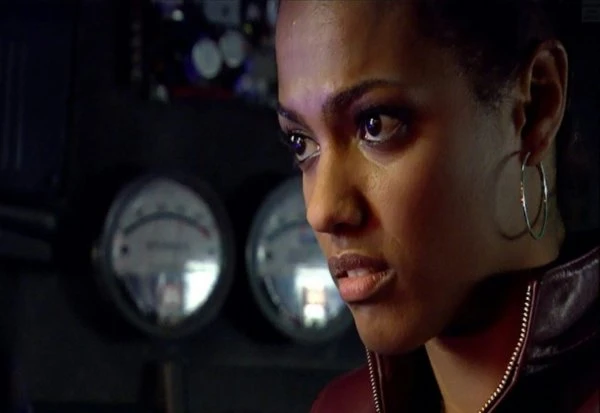
Losing Rose was a blow to the series, in fairness. Piper's performance had been a big part of the show's success in its first two seasons. By its third, the programme had replaced both its leads, and arguably Davies's approach to this wasn't the best. Rather than showing what made Martha special, he initially framed the series around Rose's absence. Many fans were already against the new girl, and this didn't help. By the end of the series, when Martha has shown what she's made of, made the Doctor accept how great she is and shrugged him off as a bad investment, it was too late for many people. Which is utterly wrong-headed: Martha, a highly intelligent and resourceful medical student played by the talented and beautiful Freema Agyeman (Little Dorrit, Law & Order: UK, Sense8) is an excellent companion and deserved more of a chance to stand on her own.
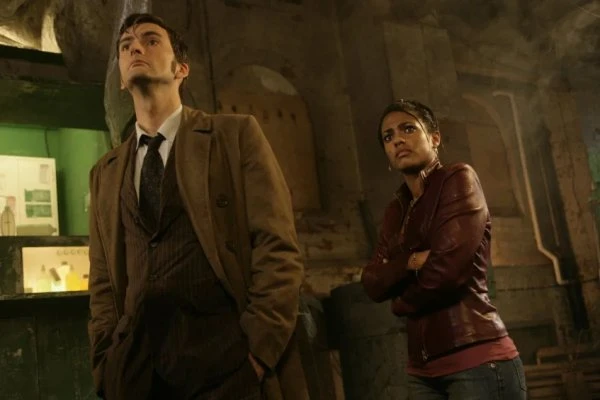
I digress. Rather than checking out a fancy, futuristic hospital as he did in his previous visit to New New York (series two, episode one: "New Earth"), the Doctor lands the TARDIS in the middle of the city, right down in the slums. It's grim and grimy, far more like the actual New York City than the glowing future of the previous visit (the Doctor and Martha visit the original New York in the very next episode, "Daleks in Manhattan." I look forward to the day the TARDIS lands in York). This is a far more interesting setting for the series, giving us a chance to actually explore this far future world from the viewpoint of its ordinary citizens. Davies was careful in how he portrayed the more sci-fi elements of Doctor Who. He gradually got more and more out there, but to begin with, the weird and wonderful was tempered with terribly ordinary people and problems that could have walked straight from 2005 (which they, of course, had). It was a fine balancing act, and "Gridlock" is a good mid-point between "The End of the World" (series one, episode two) in which the Doctor (Christopher Eccleston) and Rose visit the end of the Earth and a gathering of bizarre aliens, but discuss plumbing and go for chips; and "Planet of the Ood," where the Doctor and Donna (Catherine Tate) arrive on an ice-world and the viewer is expected to side against the humans and with a group of aliens who have tentacles for mouths, keep their brains on the outside and sing to each other in a hive mind. We're five billion years into the future, and there are people of all the colours of the rainbow living alongside humanoid cats, but they're recognisable people living in a strange but not unimaginable environment. It's a world that could be set at any arbitrary future date, with people who would comfortably fit in the late 20th/early 21st century with only a small makeover.
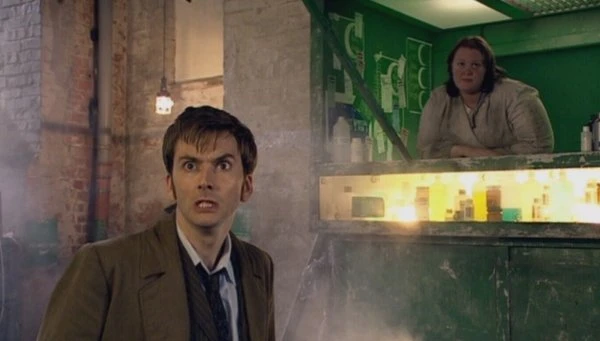
The existence of a slumlike undercity is immediately recognisable from both real life and science fiction: look at the cutthroat world of the lower levels in Star Wars' capital planet Coruscant, or the miserable slums of 2000 AD's Megacity One (referenced by Davies as a partial inspiration for this story). Things aren't quite the same here, in the region called Pharma Town, where people operate little stalls selling mood patches – drugs with functions such as Forget, Honesty and Happy Happy – but it's no different to any other vice that people will peddle, legally or otherwise, anywhere humankind congregates.
New New York's distinguishing feature in this time period is its motorways: a huge expanse of roads locked in perpetual gridlock, where people live isolated lives, sealed into their pod-like cars. Unable to venture outside except for the occasional layby because of the fumes, they spend decades moving a few miles down the road, searching for work, and a better life. Again, the endless traffic of flying cars is familiar from sci-fi: Star Wars's Coruscant again, Back to the Future: Part II, The Fifth Element, all feature it briefly. Here, though, it's the central concept of the story. It's a brilliantly realised world, with the endless traffic of the undercity created by digital artists The Mill, while a single cleverly designed car set is redressed, over and over, to stand for multiple vehicles throughout the episode, each with its own idiosyncratic drivers/inhabitants.
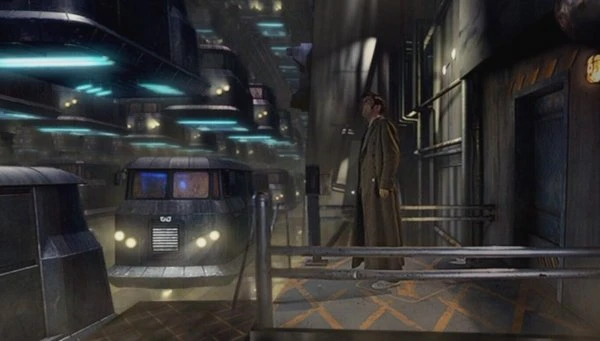
It's idiotic, of course. No one would willingly get into a car in the knowledge that they'd be driving for years before they ever saw solid ground again. It's absurd that the status quo has gone on so long, even before we learn that the city above has been abandoned. It makes no sense – but making sense was never exactly high on Doctor Who's agenda. The episode is carried along on its visual appeal, its sense of an understandable, if implausible closed world, its characters and their relationships. It's also, for all that the names are taken from New York, a very British sort of world, where characters muddle along in a "making the best of things" kind of way.
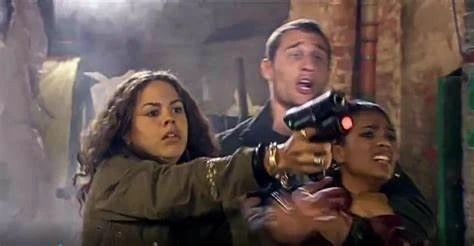
The first drivers we meet are Cheen and Milo, played by Lenora Critchlow (Sugar Rush, Black Mirror, Being Human) and Travis Oliver (Doctors, Casualty), a young couple who abduct Martha so that they have the required three-person crew to get access to the fast lane, deep below the main traffic. The Doctor vows to rescue Martha, naturally, walking into the toxic smog and hitching a lift on with the first driver daft enough to stop for him. This happens to be Brannigan, a cat person who, for whatever reason, dressed like Biggles and is played by Ardal O'Hanlon (Father Ted, My Hero Death in Paradise). Having a feline pilot with a roaring Irish accent is an interesting choice, for sure, and Brannigan is certainly an unforgettable character, especially for those of us who can only hear him as Father Dougal. He lives in his car with his wife Valerie (Jennifer Hennessy – she'll was back in Doctor Who eleven years later as Bill's foster mum), who is human. They have kittens. It's one of several bizarre, cartoonish elements that intrude into the semi-reality of the story.
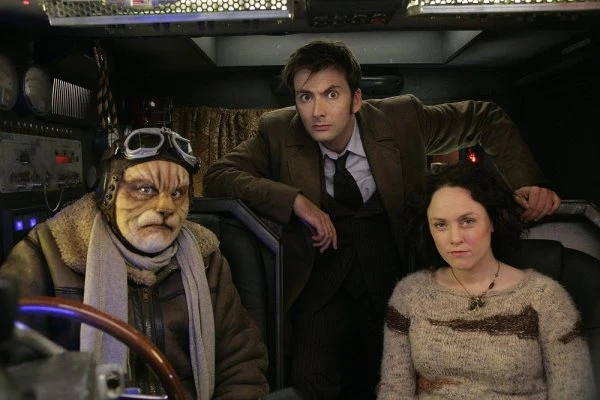
One thing to remember about Davies's approach to Doctor Who is that his scripts' generally hopeful, optimistic tone is at odds with his own rather cynical worldview. While he goes out of his way, in the year five billion stories (and later in this season, the far, far, far future setting of "Utopia") to suggest that humanity has a long, rich future ahead of it, underneath this is the suggestion that we'll remain just as selfish, foolish and insular as we always have been. Davies's view of human beings in general is not very favourable. This reaches its ultimate expression in series four's "Midnight," which shows just how vicious and frightened people can be in a large group, but there are hints of it throughout his scripts. In "The End of the World," there's a throwaway line about religion being banned on the space station on which its set. Classic Doctor Who is generally anti-religious, but the modern series is more even-handed. "Gridlock," at first glance, seems a pro-religious episode. The drivers bond over their shared experiences and sense of community, singing hymns together in a non-specific but clearly spiritual experience. It's portrayed in a favourable light, reinforcing the hope of the people on the road. Martha is moved to tears (the Doctor, in contrast, stands respectfully but visibly bored).
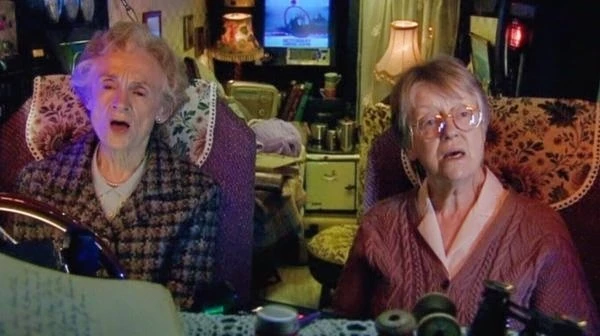
Underneath this, though, is a severely cynical view of religion. Their beliefs might bond them together, but they also keep these people on the road, day after day, never questioning or fighting against the system that has abandoned them. The hymns, state sanctioned and held at an appointed time, ordered by an automated hologram, foster harmony in their society but merely keep the populace cowed an unquestioning. The opiate of the masses; no wonder the five-billion-ers tried to ban it. It's the same cynicism at play under that muddling through attitude; at first it seems admirable, but all it's done is kept the status quo unchallenged.
It takes the Doctor to make a change, to come into this world and start tearing it apart. In his mission to save Martha, he descends to the fast lane, dropping from car to car through a series of increasingly odd little cabins with odder inhabitants. Just above the bottom level, he discovers the truth of why people don't come back from the fast lane: there are creatures down there, living in the toxic fumes and snapping up cars for a quick snack. These huge beasts look like nothing more than great, distorted crabs. The Doctor recognises them immediately: they're the Macra.
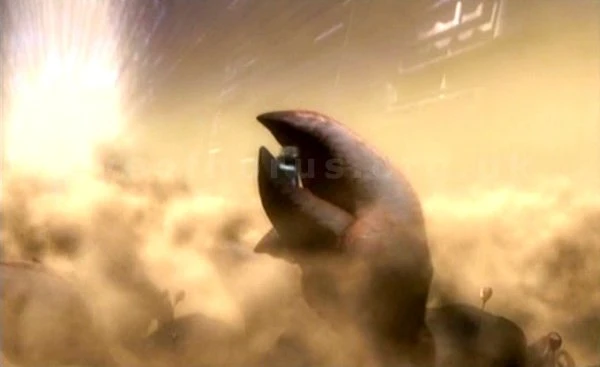
This is, for a fan of the original series, hilarious. The Macra are a C-list monster, who's only previous appearance was in the 1967 Patrick Troughton serial The Macra Terror, broadcast almost exactly forty years earlier. That serial has been lost for years; recently an animated reconstruction was released, but in 2007 barely anybody would have seen it, and most of those who had done would hardly remember it. They're in their purely as a silly treat for the fans, and there's no harm in it. For new or casual viewers, it's no different than the Doctor recognising, to pick a random example, the Vespiform in "The Unicorn and the Wasp." Just a new monster the Doctor is familiar with thanks to his centuries of experience. The hardcore geeks know better. Again, Davies was careful with references to the programme's past to begin with, to avoid alienating new viewers, but gradually dropped in more and more nods and winks (something that continued after he left the series). These absurd crab monsters make for a fun, over-the-top CGI threat for the climactic act of the episode.
The Doctor is eventually brought to the upper city by the only two remaining inhabitants. Novice Hame (Anna Hope) is a another cat person, a nun who was a villain in the previous visit "New Earth," and while she's now acting out of noble motives, her actions have led to millions of people being trapped on the roads. The other is the Face of Boe – a gigantic rubber head who lives in a tank and is billions of years old. Years earlier, the newest mood patch, "Bliss," created a virus (science has never been that stringent on Doctor Who) which wiped out everyone else in the upper city. Since the power has gone down, Boe has been keeping the system going with his own dwindling power supply, and they both sealed the undercity dwellers away for their own good. The episode mostly came about because of a desire to feature the Face of Boe again, since what had been created as a barely animated bit of set dressing for "The End of the World" proved absurdly popular with crew and viewers alike. The Doctor and Boe crack use the last of his power to crack open the ceilings of the undercity, leading to a triumphant finale where the cars fly up to the sunlight and away from the Macra.
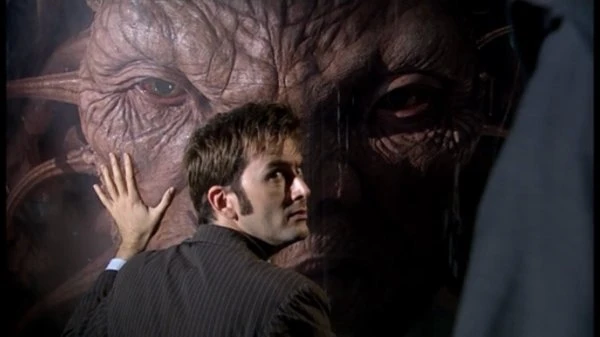
This isn't the end of the story, though. As relatively standalone as this episode is, it still has moments that propel the ongoing story. The Face of Boe, finally dying having spent himself in his last hurrah, gives the Doctor his final message: "You are not alone." Finally, Martha sits down in Pharma Town and refuses to budge until the Doctor tells her what this is all about. The Doctor admits that he is the last of his kind, and starts waxing lyrical about his old homeworld. For all the mythic overtones of Gallifrey and the Time War, at the heart of it it's just a woman coaxing a stubborn man to finally open up about his feelings.
"Gridlock" combines much of the very best of Davies's run on Doctor Who: a fun, silly sci-fi adventure with big monsters, a triumphant climax and an over-the-top future setting, but underneath explores and critiques social cohesion and blind faith. It's a deft example of world-building that makes enough of an impression to draw attention away from the daffiness of the underlying conceit. It explores the relationship between the Doctor and his companions, his running from his past and his reluctance to explore his feelings. Martha begins to show that she can handle an adventure on her own, even if she's still living in Rose's shadow. The cast give it their all, somehow making the death of a huge rubber face a heart-wrenching moment. It's ideally structured, a complete adventure within forty-five minutes, standing on its own but linking to the Doctor's ongoing adventures. While it's never going to top the best episode polls, "Gridlock" is a truly solid episode of Doctor Who in one of its golden eras.
Review: Daniel Tessier
Dan describes himself as a geek. Skinny white guy. Older than he looks. Younger than he feels. Reads, watches, plays and writes. Has been compared to the third, fourth, fifth, sixth, seventh, eighth, tenth, eleventh and twelfth Doctors, and the Dream Lord. Plus Dr. Smith from 'Lost in Space.' He has also had a short stories published in Master Pieces: Misadventures in Space and Time a charity anthology about the renegade Time Lord and Sarah Jane Smith – Roving Reporter, the proceeds of which go to the British Columbia Cancer Foundation.
Dan's web page can be here: Immaterial
Published on April 20th, 2021. Written by Daniel Tessier for Television Heaven.


